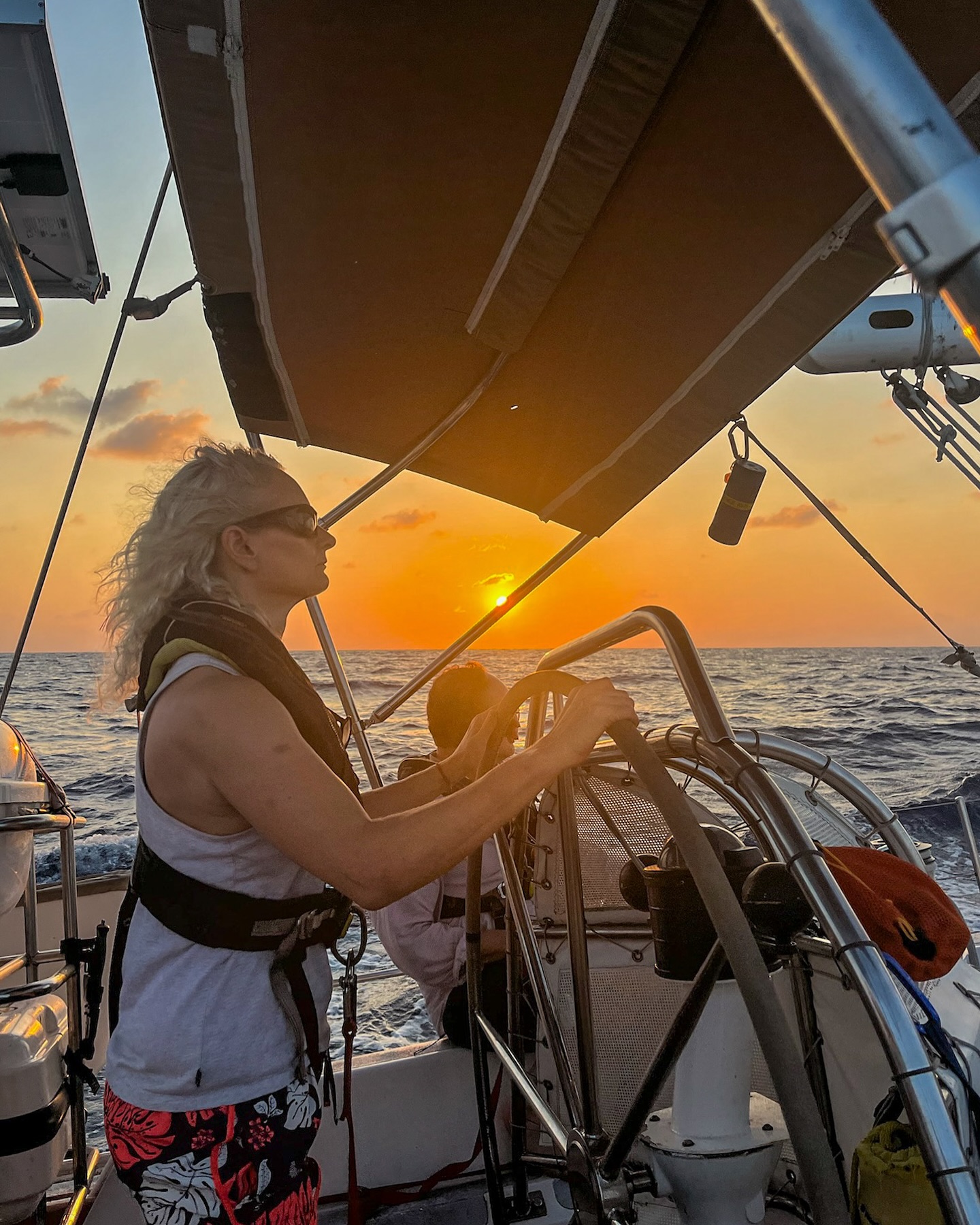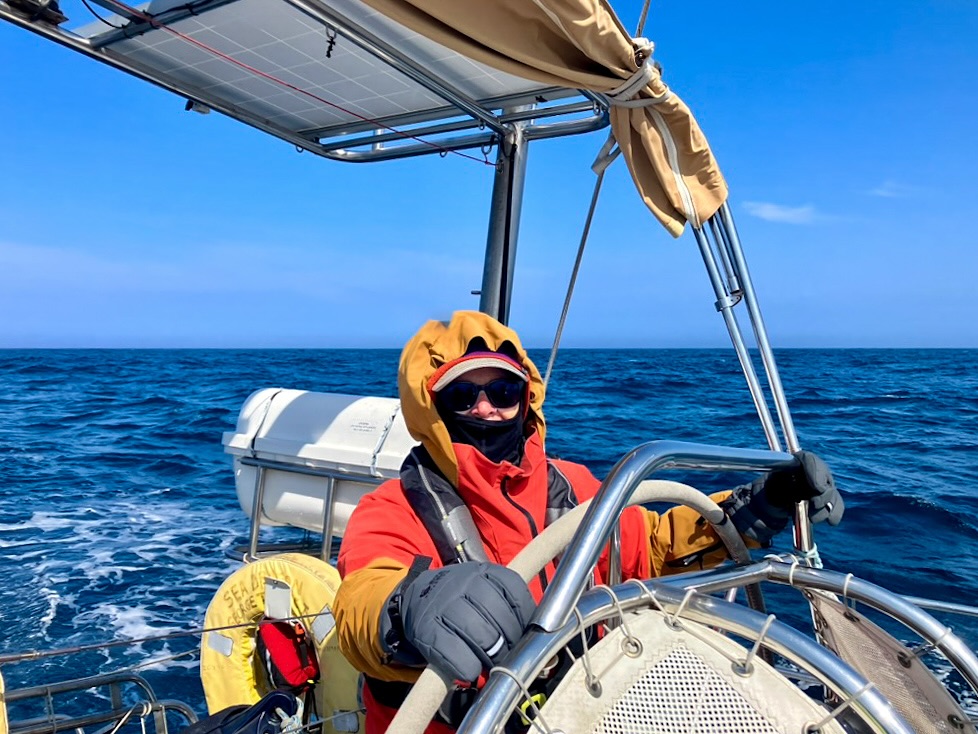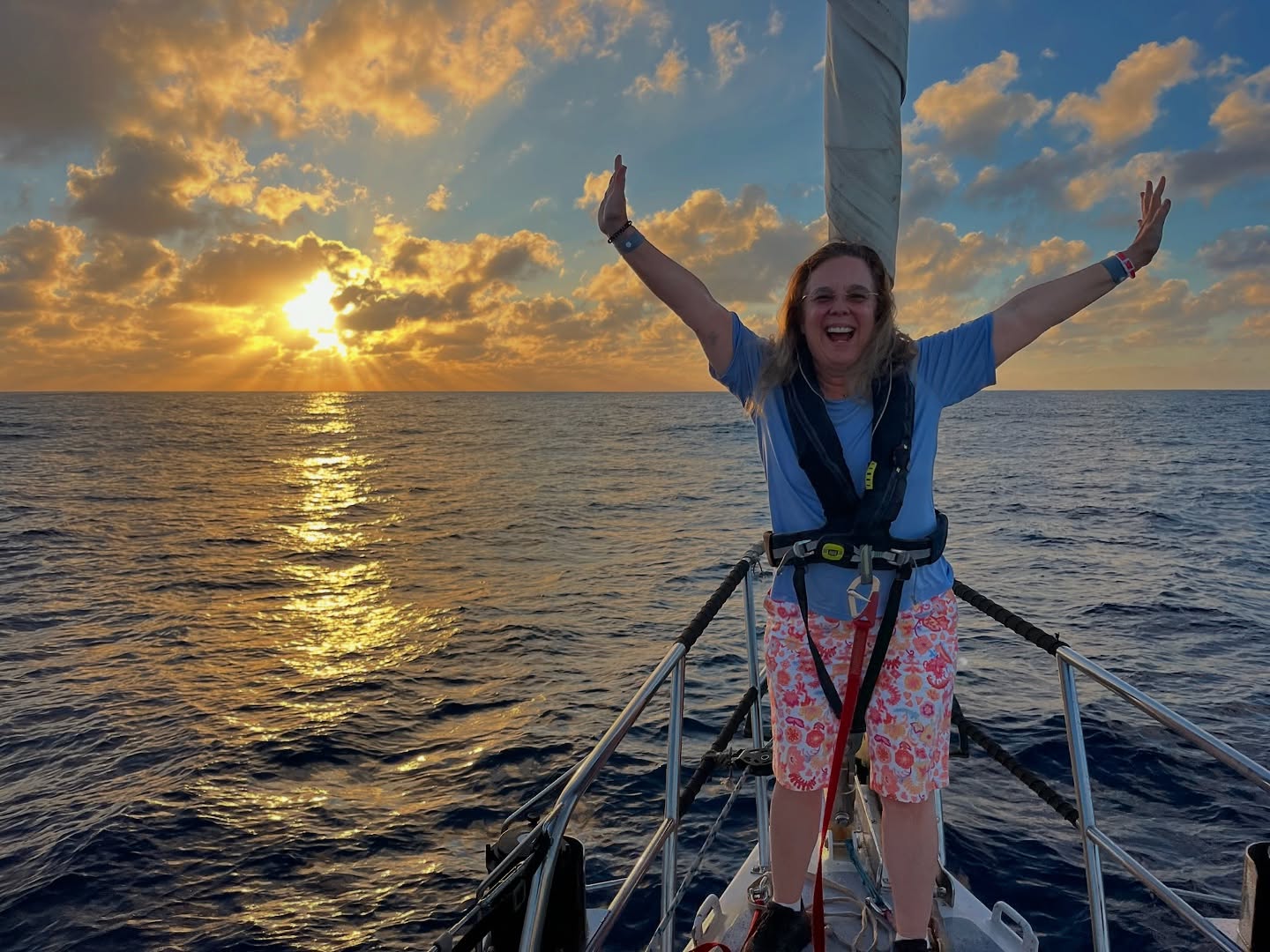Yesterday, Stephanie Wright, Sea Dragon’s resident leg 1 scientist, gave a great talk at the University of the Azores’ Oceanography Department, a gracious white building on the hillside above Horta. It’s a former hospital and there’s still a medical feel to the place, lingering amongst the modern lab facilities and marine life posters. I introduced the Gyre to Gaia journey and aims and Steph, who is normally based at the University of Exeter, talked about the research she’s been doing en route. She’s asking two main questions: 1) where on our route will we find the most plastic and plankton occurring together; 2) can we find ‘real world’ evidence (as opposed to lab-based evidence, which already exists) that plankton ingest plastic?
The critical question is the second one, and the method is brilliant. First, catch some plankton. This is done (in all weathers) at the same time of day, and involves lowering two trawls over the side to the same depth, and pulling them through the water for exactly twenty minutes. The contents of the first trawl are then dropped into formaldehyde and preserved so that the creatures in there can be accurately identified later in the lab. The plankton in the second trawl are kept alive for a couple of hours in what’s essentially a jar with a sieve mesh half way down it. The idea is that, during this time, the plankton will eat and excrete as normal. Their faeces drop through the mesh and they, too, are captured for analysis in lab conditions later. If the faeces prove to have plastic in them, bingo, we have evidence that the plankton have been ingesting plastic. It’s brilliant and more or less that simple (though not quite so simple when the swell is high or the wind is up). And yes, there have been lots and lots of jokes about plankton poo, essentially the core of our mission.
As well as university staff and students, there were various folk at the talk who we’d met at the plastics clean up. Would we like to join them for a meeting (aka beer) the following evening? We’ve been so lucky in this regard, to be able to get a little bit beyond the beach and Peter’s Sport Café Bar and meet and chat with some people who live and work here. Not that anyone’s been complaining about the beach and the cafes. Yesterday I worked in the morning and walked to the beach as the clouds built up. Today, learning fast, I spent the morning on the dark, volcanic-sand beach, hundreds of small fish swerving away in the shallows as I walked out to swim. The water temperature is distinctly invigorating but, when the sun is out, definitely worth it. Wandering back to grapple with laptop life after lunch I detoured via a yacht that a long-term sailor and environmental activist from the plastics group had determined should be mine. I sat on ‘Buster’ and wondered. Plankton comes from a Greek word for wanderers and refers to any life form swept along by ocean currents. Jelly fish are plankton, for example, as well as many of the tiny creatures we’ve been catching from Sea Dragon. Maybe, just maybe, I’ll become one too.
– Dr. Kate Rawles, Mission Leader, Gyre to Gaia Expedition, October 1, 2014
























